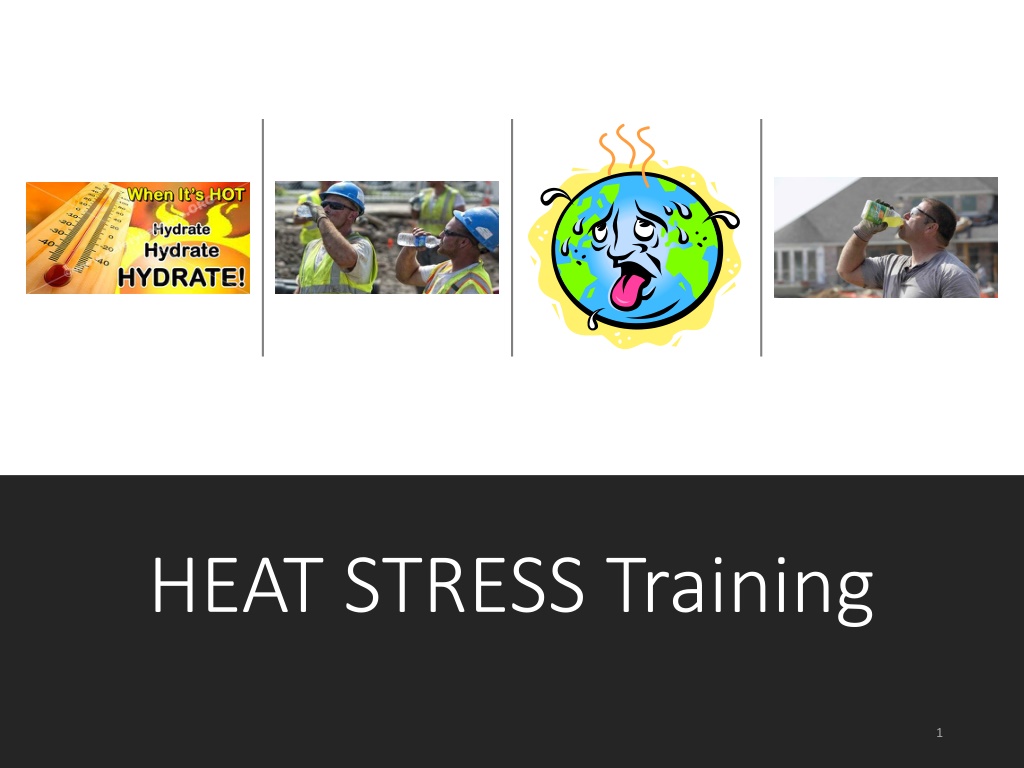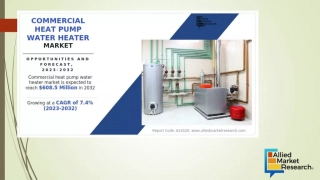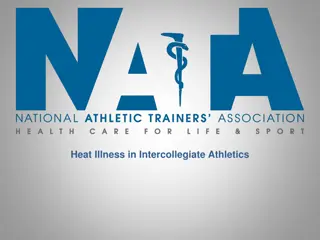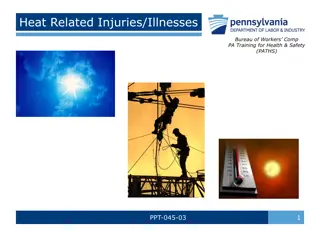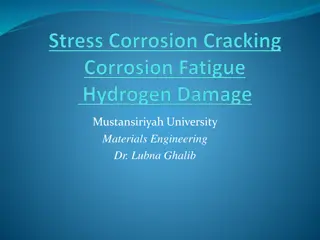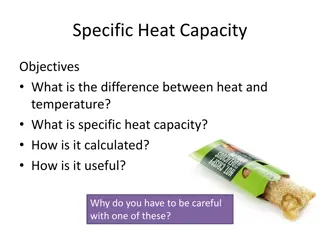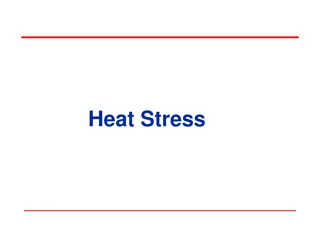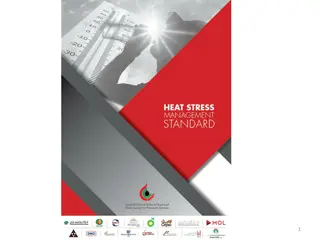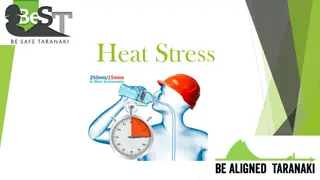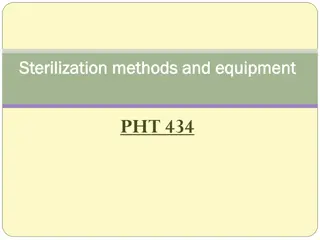Heat Stress Training and Prevention Information
Learn about heat stress training, factors increasing the risk for heat-related illnesses, dehydration, early and later signs of heat-related illnesses, how to replace lost fluids, and how to manage heat cramps and exhaustion. Stay hydrated and recognize the signs to prevent heat-related issues in various settings.
Download Presentation

Please find below an Image/Link to download the presentation.
The content on the website is provided AS IS for your information and personal use only. It may not be sold, licensed, or shared on other websites without obtaining consent from the author. Download presentation by click this link. If you encounter any issues during the download, it is possible that the publisher has removed the file from their server.
E N D
Presentation Transcript
Factors Increasing Risk for Factors Increasing Risk for Heat Heat- -Related Illnesses Related Illnesses CLIMATE EXERCISE AND ACTIVITY AGE PRE-EXISTING ILLNESS OR CONDITIONS DRUGS AND/OR MEDICATIONS CLOTHING 2
Dehydration Heat cramps Heat Heat- - Related Related Illnesses Illnesses Heat exhaustion Heat stroke 3
Early Signs Fatigue or weakness Headache, irritability or dizziness Dehydration: Dehydration: Signs and Signs and Symptoms Symptoms Nausea Dizziness Excessive thirst Dry lips and mouth 4
Later Signs Disorientation Loss of appetite or severe thirst Dry mucous membranes or sunken eyes Dehydration: Dehydration: Signs and Signs and Symptoms Symptoms Lowered blood pressure or rapid pulse Decrease in perspiration Dark, amber urine/lack of urine output Unconsciousness 5
Replace Replace lost fluid If the patient is conscious and able to swallow, encourage the patient to drink small amounts of a carbohydrate/electrolyte-containing liquid, such as a commercial sports drink, juice or water Dehydration Dehydration Care Care Encourage If dehydration is severe, fluids may need to be replaced intravenously Replace 6
Heat Cramps Heat Cramps Cramps are painful, involuntary muscle spasms most often occurring in legs and abdomen To reduce cramps Resume activity with caution if the employee feels better and cramping resolves Consume fluids, such as a commercial sports drink or water Gently massage and lightly stretch Rest 7
HEAT CRAMPS HEAT CRAMPS Caused by excessive loss of electrolytes Early warning sign of heat stress Painful cramps usually in legs or abdomen Stop activity, hydrate, rest in cool place Get medical attention if condition continues 8
Heat Exhaustion: Signs and Symptoms Heat Exhaustion: Signs and Symptoms Weakness, dizziness, light- headedness or headache Rapid, weak pulse, shallow breathing or low blood pressure Cool, moist, pale ashen (grayish) or flushed skin Decreasing LOC or fainting Exhaustion Heavy sweating Muscle cramps (heat cramps) Nausea 9
Heat Exhaustion: Care Heat Exhaustion: Care Move Apply Encourage Apply Call Move to a cooler area Apply cool wet cloths or towels to the skin. Encourage rehydration Apply ice packs or cold packs to the wrists, ankles, armpits, groin and back of the neck Call 911and provide care for heat stroke if employee does not improve in a few minutes, refuses to drink water, vomits, shows other signs of heat stroke or begins to lose consciousness 10
Life-threatening condition Two types: Heat Stroke Heat Stroke Classic: due to environmental changes Exertional: due to excess heat loss through exercise exceeding body s ability to cool off 11
Heat Stroke: Signs and Symptoms Heat Stroke: Signs and Symptoms Flushed or red skin, dry or moist Extremely high body temperature Rapid, weak pulse or shallow breathing Low blood pressure Throbbing headache Dizziness, nausea or vomiting Decreasing LOC/altered mental status Confusion, disorientation, irrational behavior or attention deficit Unconsciousness or coma Convulsions or seizure 12
The bodys cooling mechanism shuts down HEAT STROKE HEAT STROKE Over 20% that reach the heat stroke stage die even with medical attention 13
Immediately call 911 If possible, move to a cooler environment Heat Heat Stroke Stroke Care Care Begin rapid cooling methods Douse the employee with ice water-soaked towels over the entire body, spray with cold water, fan or cover the patient with ice towels Take steps to minimize shock Be prepared to give ventilations or perform CPR, if needed 15
SYMPTOMS SYMPTOMS HEAT EXHAUSTION HEAT STROKE Skin is pale Excessive sweating May faint but usually conscious Headache Nausea and vomiting Blurred vision Dizziness Skin is red and hot No sweating Unconscious or incoherent 16
TREATMENT TREATMENT HEAT EXHAUSTION HEAT STROKE Call Supervisor Rest in cool place Loosen and remove unnecessary clothing Shower or sponge with cool water Call 911 Immediate, aggressive, effective cooling DO NOT give anything by mouth 17
ENVIRONMENTAL RISK FACTORS ENVIRONMENTAL RISK FACTORS AIR DIRECT SUNLIGHT RADIANT HEAT HUMIDITY TEMPERATURE LITTLE AIR MOVEMENT 18
Work intensity Work duration Location (roof, road, enclosure) JOB RISK JOB RISK FACTORS FACTORS Clothing (weight, impermeability) Respiratory protection Working inside closed buildings 19
WORKER RESPONSIBILITY WORKER RESPONSIBILITY BE WATCHFUL FOR SYMPTOMS (SELF AND OTHERS) PROPERLY HYDRATE (BEFORE, DURING, AFTER) PROVIDE FANS AND OPEN WINDOWS WHEN POSSIBLE JOB ROTATION / FREQUENT BREAKS REPORT ANY ILLNESS TO YOUR SUPERVISOR IMMEDIATELY GET ADEQUATE REST AVOID ALCOHOL, UNNECESSARY MEDICATION, AND CAFFEINE 20
